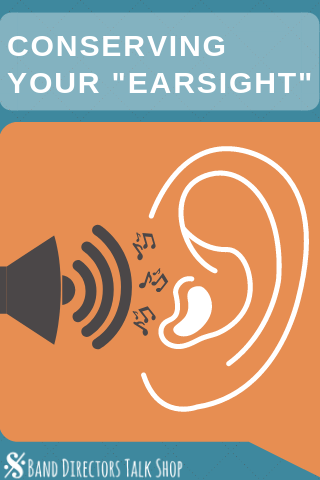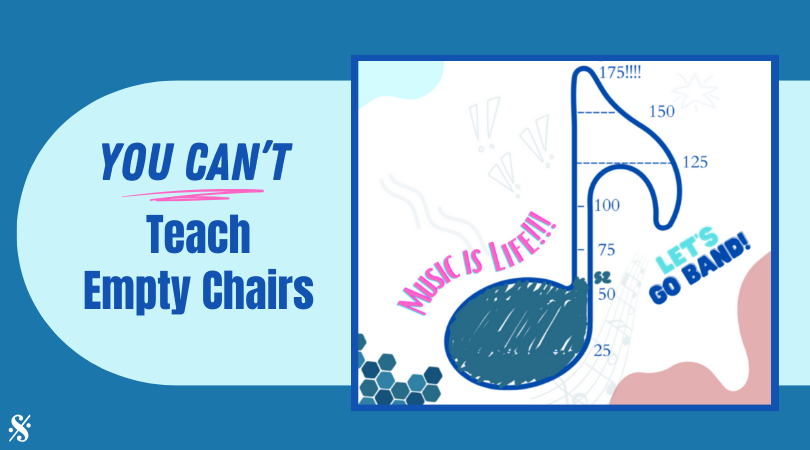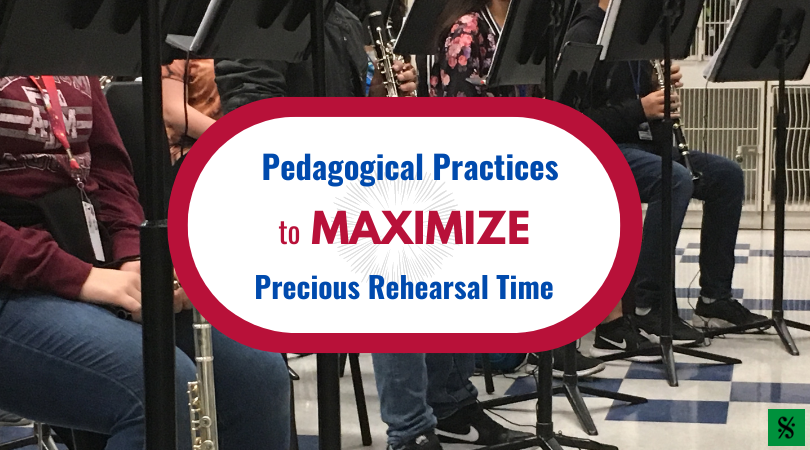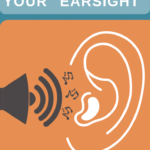
As musicians, our hearing is our most important tool. While some miraculously survive an entire career with acute hearing intact, most do not. Noise induced hearing loss (NIHL) is common in musicians. Of all music educators, band directors are especially at high risk for hearing loss. The chronic exposure to sound in the life of a band director leads to a cumulative overdose of noise over a period of years. This almost always leads to hearing damage and subsequent hearing loss.
Hearing damage can be repaired.
Hearing loss cannot be repaired.
The hearing mechanism itself is complex. In its most simple explanation, sound waves travel through the ear canal to the cochlea where they are intercepted by tiny hair cells that transmit the sound through the auditory nerve to the brain. When these hair cells are continually exposed to high noise levels, they fatigue, lose their resilience, and stop transmitting efficiently. This is when hearing damage occurs. Pain, ringing in the ears, and a feeling of fullness in the ears are all signs of hearing damage. Given enough time to rest, these hair cells can regain resilience and spring back into action. if the high noise level continues, however, and the hair cells aren’t allowed to recover to their original state, they die – and the result is hearing loss.
Hearing damage can be repaired with hearing rest.
Hearing damage that is not repaired leads to hearing loss.
Hearing loss cannot be repaired.
Rest is a fundamental component of hearing conservation. In the same way that tired muscles need rest after a long run, the hearing mechanism needs rest after exposure to loud sound. Silence is golden – silence is healing – silence is restorative.
Do you wear earplugs? How about noise-cancelling headphones? Controlling environmental sound levels is another fundamental component of hearing conservation. Given the degree of sound levels experienced by band directors, hearing protection should be worn all day. In addition to earplugs, you can also control the environmental sound level by planning your rehearsals to alternate between the loud and soft moments, and make good use of your rehearsal space. Adding soundproofing material to the walls and carpeting floors can make a significant difference.
In a recent study by Patrick Hayes, “Noise Doses of High School Band Directors” in Journal of Band Research (2013), it was revealed that all of the directors in the study experienced noise levels of 300 to 2,000 percent greater than the safe levels set by the National Institute for Occupational Safety and Health (NIOSH) and the Occupational Safety and Health Administration (OSHA).
According to NIOSH, any level higher than 85 decibels (dB) for a cumulative period of 8 hours is damaging to the hearing mechanism and requires hearing protection. As the decibel level increases, the safe duration decreases. This means that a jazz band playing at 100 dB is safe for about 15 minutes before hearing damage ensues.
After a day of marching band, jazz band, sectionals, drumline and more marching band, your ears are in need of a rest. Remember – silence is restorative. A full day of high noise levels requires rest. Allow yourself silence in the car on the drive home, forego spin class and the action movie and skip mowing the lawn for now. Wearing earplugs or sound cancelling headphones will improve the quality of your hearing rest period. Earmuffs sold at sporting goods stores for shooters are effective in blocking sound and at a fraction of the price of sound-cancelling headphones.
Do you know how loud is too loud? Know what you are dealing with. Measure the sound level of rehearsals and make note of the loudest levels. There are several smartphone apps that measure decibel levels. With one of these, you can measure the decibel level not only of a moment but of an entire rehearsal. You need an app that gives the peak decibel level, lowest level, and average decibel level.
I recently attended a school jazz band concert held in a small nightclub. I had the decibel app going for the duration of the 2-hour concert. Average dB was 93, and peak dB was 107. Everyone needed some hearing rest after that!
Band directors are at a very high risk for hearing loss, and hearing loss cannot be reversed. Hearing damage can be healed through rest. Being cognizant of the sound level environment and using hearing protection throughout the day are vital components of hearing conservation.
Nancy Taylor is a Board Certified Occupational Therapist and teaches trumpet at the University of Texas at El Paso. She is the author of TeachinView Postg Healthy Musicianship: The Music Educator’s Guide to Injury Prevention and Wellness (2016) available here.
BandDirectorsTalkShop is an Amazon affiliate. When you purchase through a link from this site a small percentage is returned to us to help us maintain and improve our site. We appreciate the support!
Related Reading:
How to Have a Silent Band Rehearsal
The Crayon Analogy (For Bands)
Teach Style First
If you would like to receive our weekly newsletter, sign up here.
Don’t forget to like us on Facebook too!
Learn. Share. Inspire.
BandDirectorsTalkShop.com






Leave a Reply
You must be logged in to post a comment.